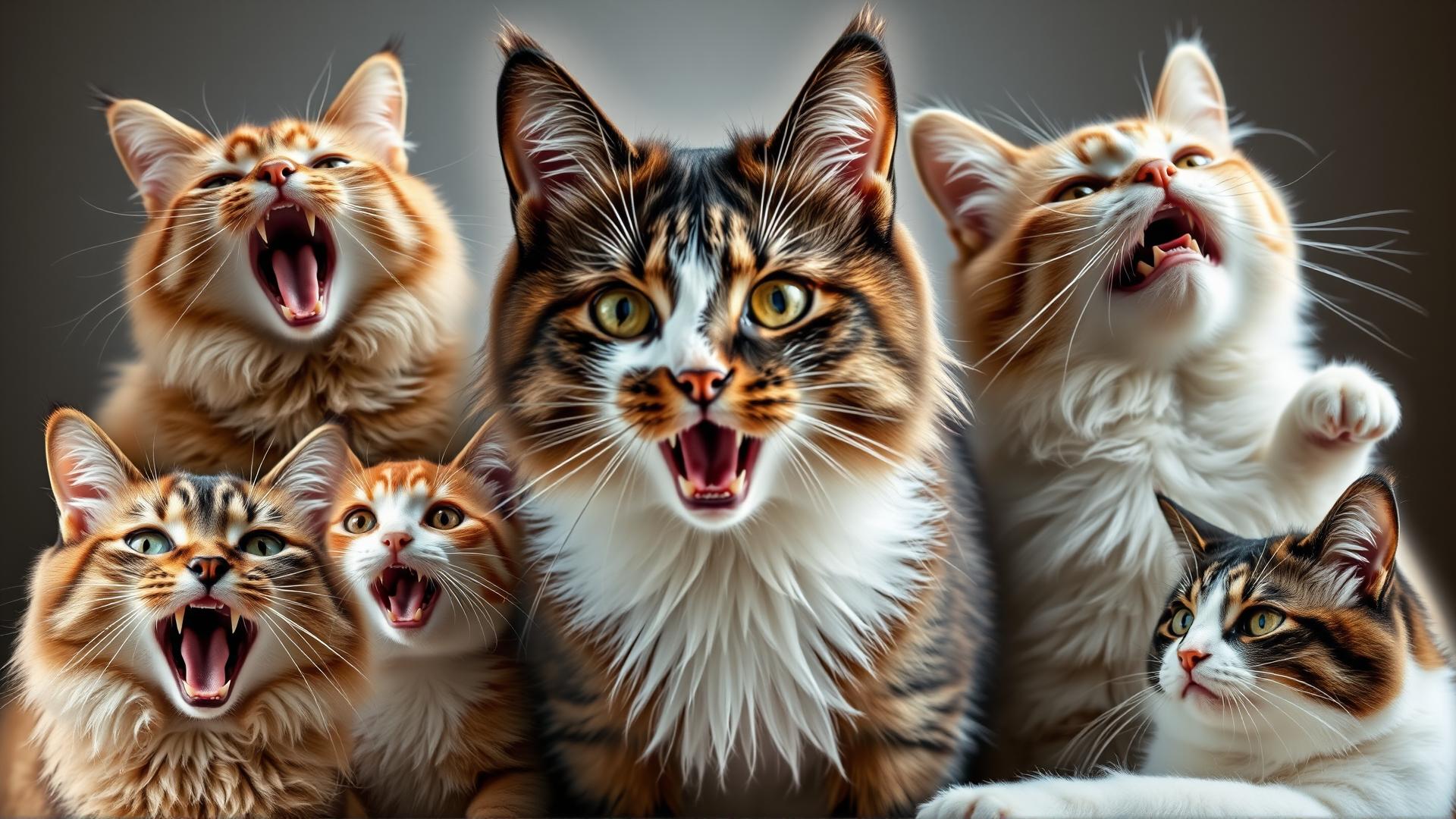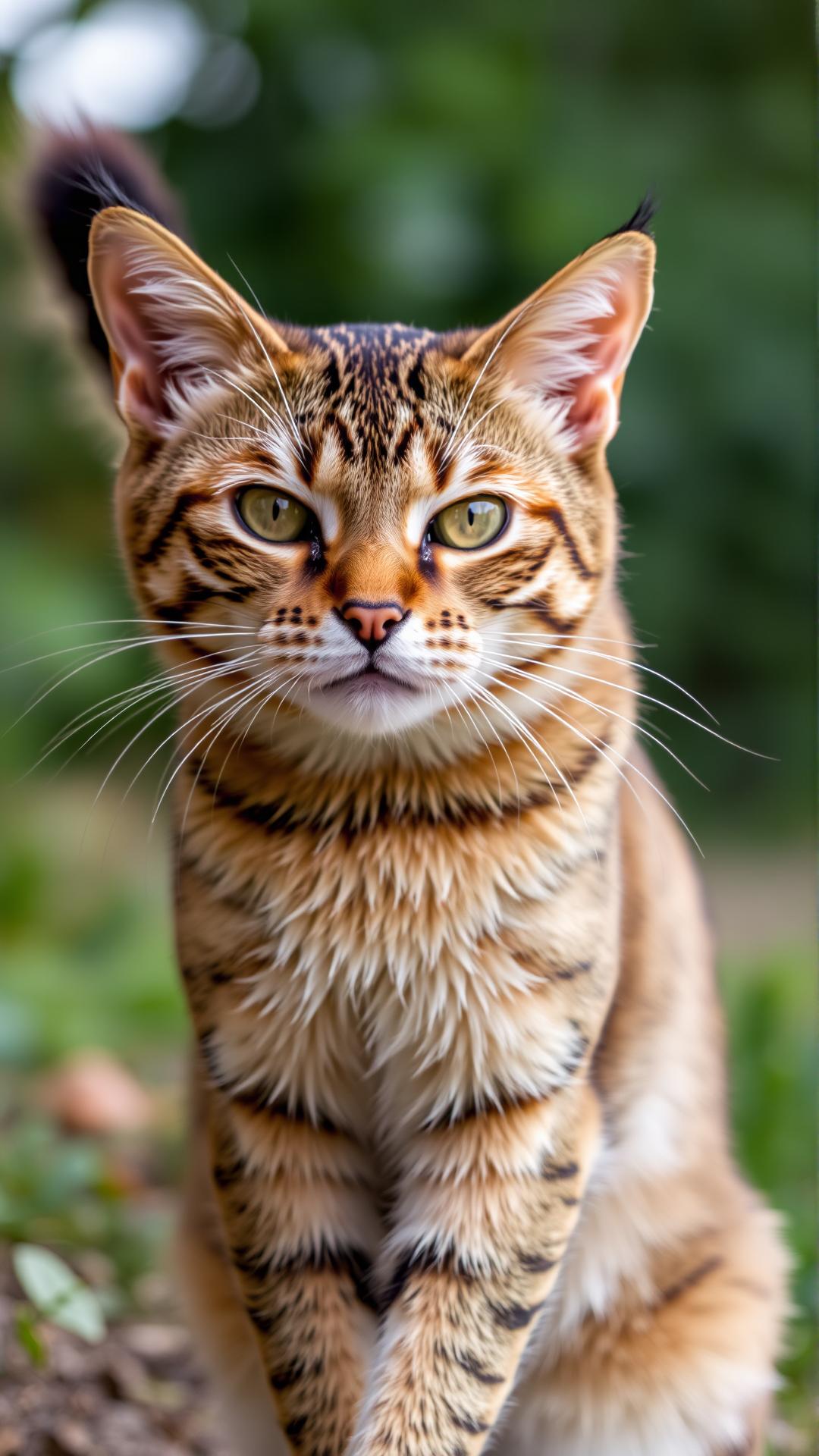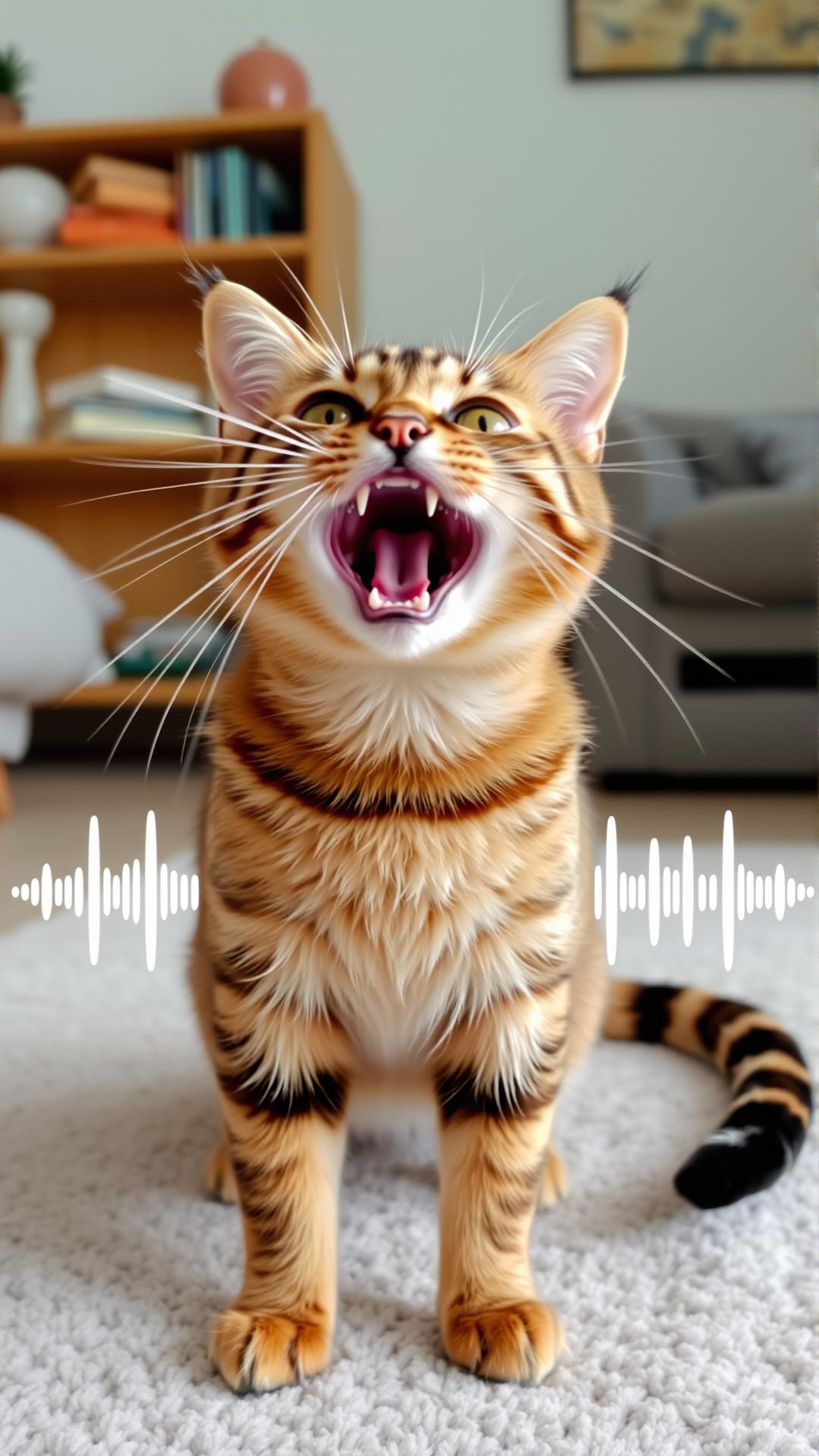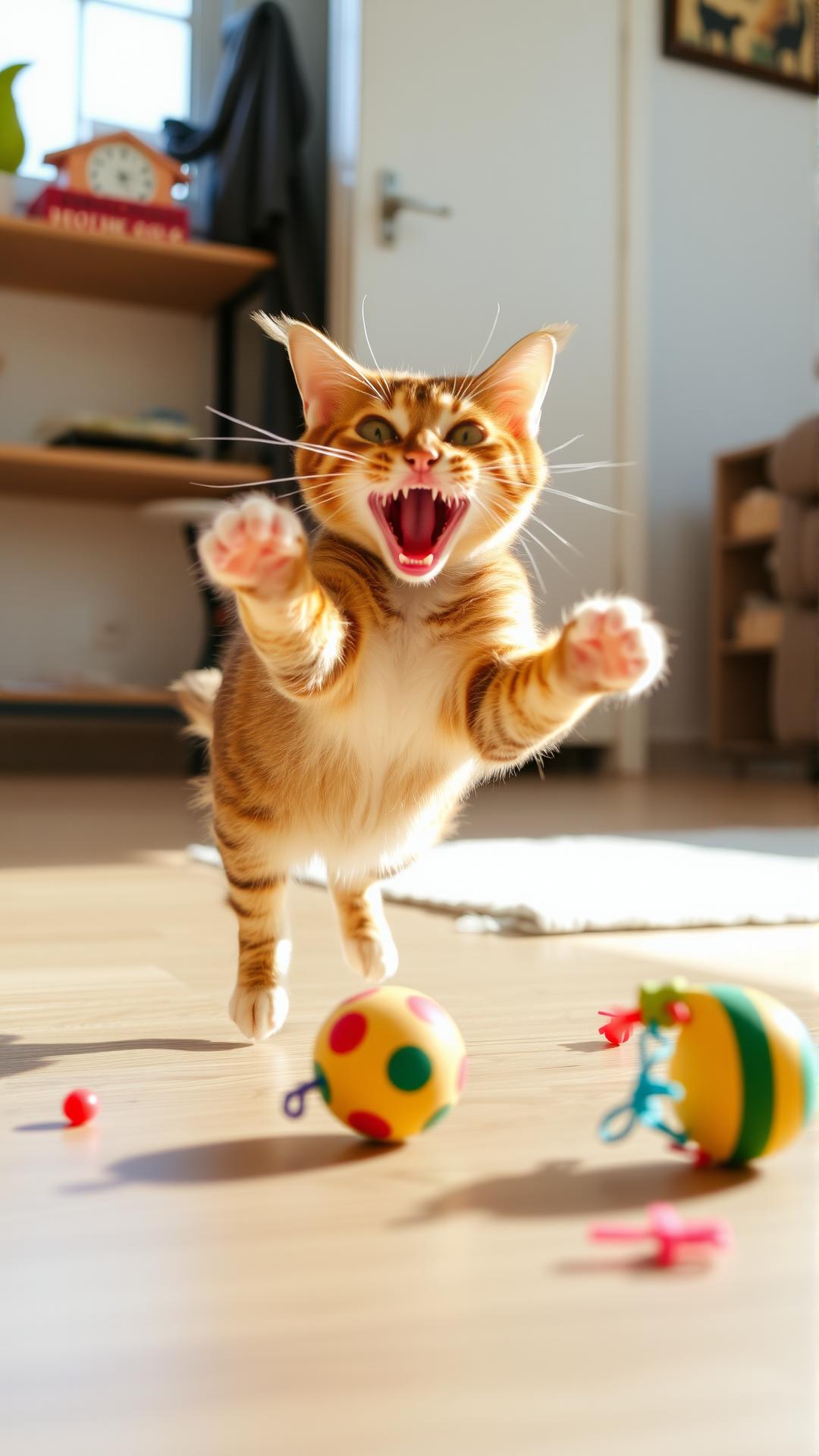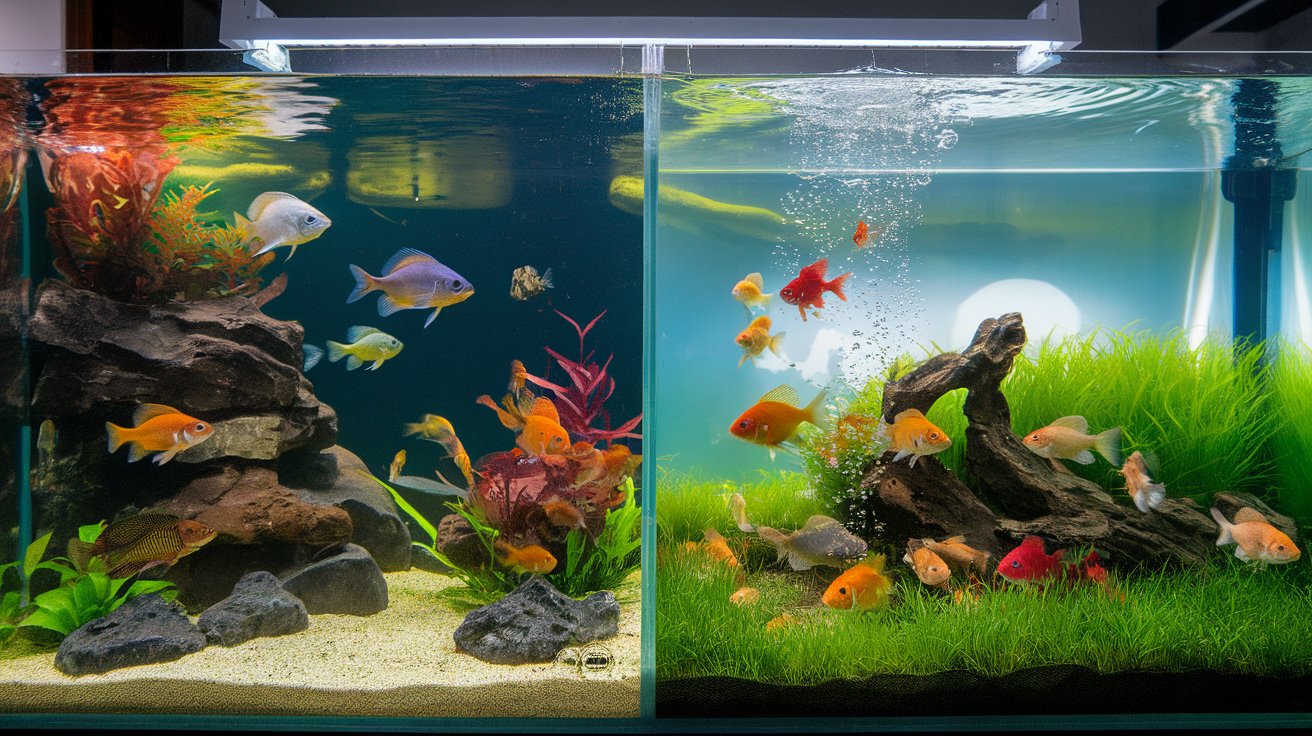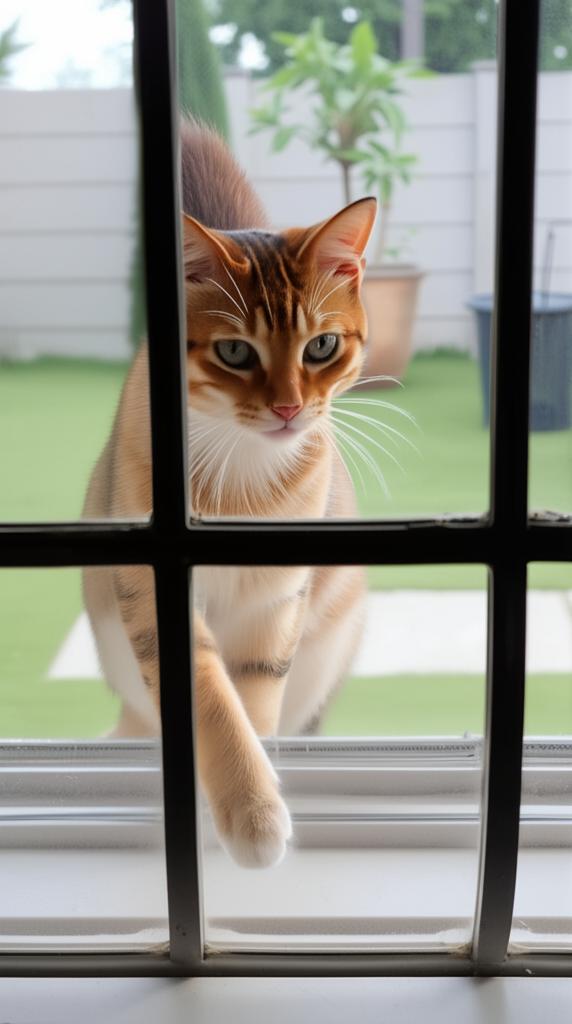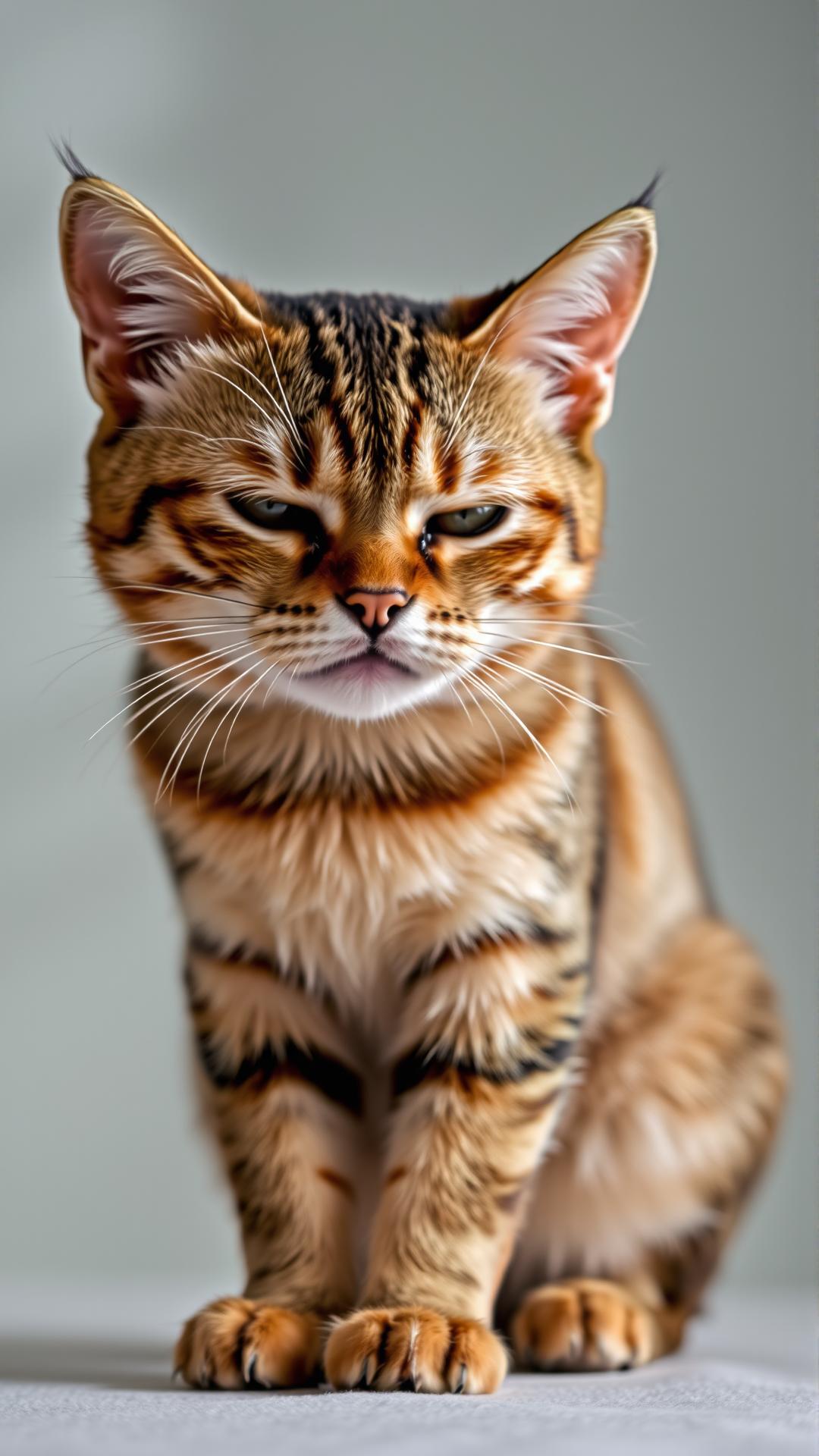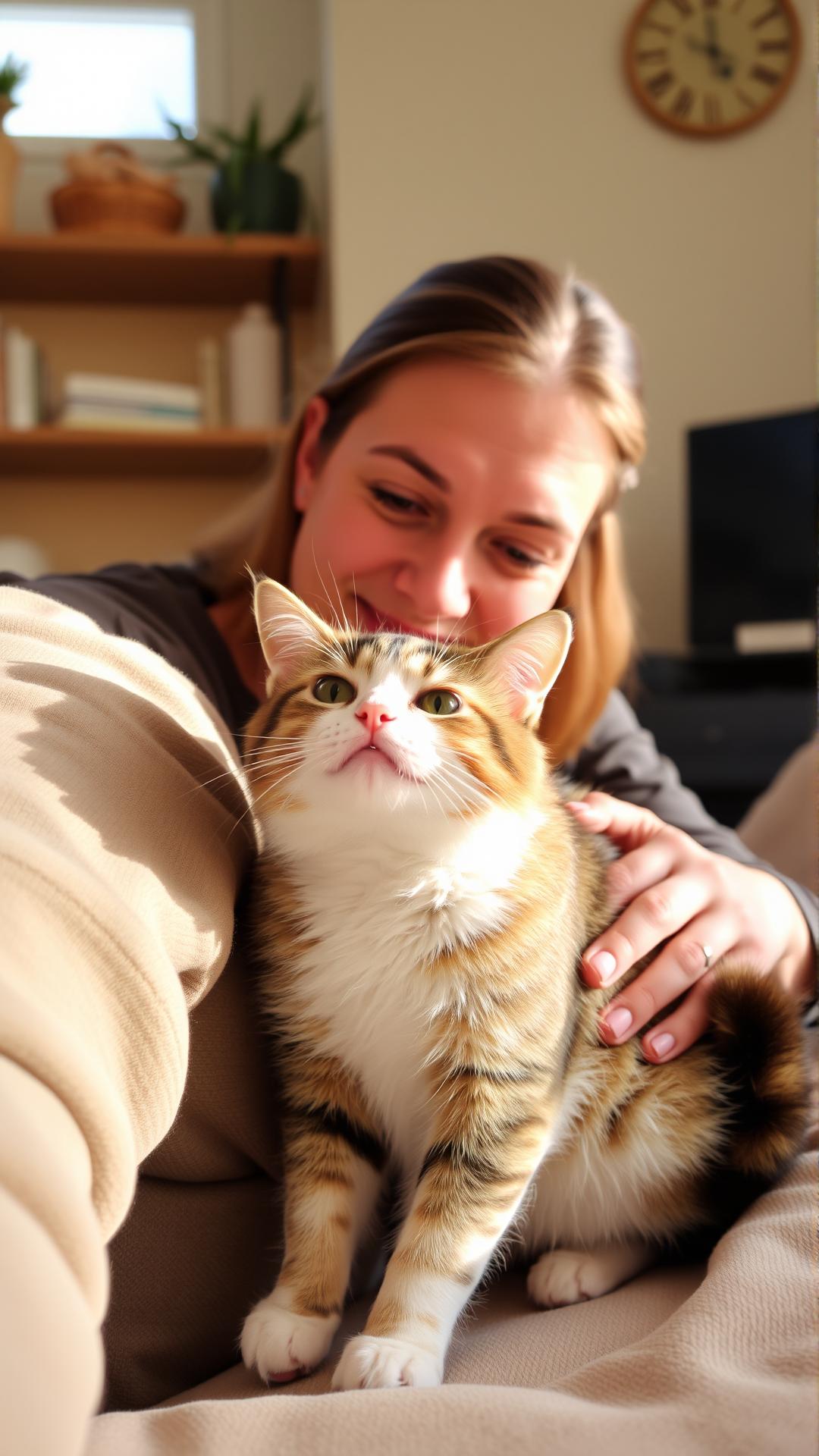Introduction
In the world of feline companions, understanding mad cat behavior requires an in-depth look into their unique communication methods and body language. Cats, being complex creatures, exhibit a variety of signals that indicate their mood and intentions. Whether it’s a playful pounce or an angry hiss, each action is loaded with meaning. This article will delve into the different aspects of cat behavior, highlighting how pet owners can decode their quirky signals to foster better relationships with their feline friends.
Cats thrive on nuanced communication, often relying on subtle changes in body position, vocalizations, and even eye movements to express themselves. From the iconic cat memes that showcase their silliness to recognizing the annoyed glare of an angry cat, the feline world is filled with expressions that, when understood, can greatly enhance the bond between humans and their beloved animals. In exploring these signals, we aim to provide insights into the behavior of our mad cats, contributing to a more harmonious coexistence.
The Significance of Body Language in Mad Cat Behavior
Understanding Cat Communication Through Posture
Body language is a primary mode of communication for cats, serving as a crucial avenue for expressing feelings and intentions. As such, understanding a cat’s body language is essential for pet owners and enthusiasts who wish to decipher the enigmatic behavior of these beloved creatures. By observing subtle changes in tail positions, ear orientation, and overall posture, one can gain insight into a cat’s emotional state.
Tail position is one of the most telling aspects of cat body language. A lifted tail often signifies confidence and contentment; it is a friendly signal that indicates a cat is open to interaction. Conversely, a low or tucked tail is generally indicative of fear or submission. Interestingly, a puffed-up tail may suggest that a cat is feeling threatened or angry, often resembling the iconic image of angry cats featured in popular cat memes. Such visual cues are invaluable in assessing whether a cat is feeling festive or fraught with anxiety.
Ears are another vital part of a cat’s communication toolkit. The orientation of a cat’s ears reveals its focus and emotional state. Ears facing forward indicate curiosity or excitement, whereas ears that are flat against the head signal aggression or fear. For instance, when a cat is in a playful mood, its ears may remain upright but relaxed, whereas when feeling threatened, they will dart back and flatten. This distinction can help owners intervene appropriately in situations where a cat may feel cornered or anxious.
Overall posture contributes significantly to understanding a cat’s mood. A cat sitting upright with its body relaxed signifies comfort and security, while a cat that is crouching or hunched may be feeling defensive or apprehensive. Further, slow blinking can be interpreted as a sign of affection and trust in felines. When a cat makes slow eye contact, it is essentially saying that it feels safe in its environment, embodying the tranquility often found in cat aesthetics.
By paying attention to these body language signals, pet owners can better comprehend their feline companions’ moods, leading to healthier interactions and a deeper bond. The subtleties of cat communication are rich with meaning, especially for mad cats that may be more expressive in their behavioral flair.
Vocalizations The Cats Voice
Understanding Cat Communication Through Sound
Vocalizations are a vital aspect of how cats express themselves, conveying everything from their needs and desires to their emotional states. Unlike dogs, who often have a wider range of vocal sounds associated with specific meanings, cats employ a more nuanced vocal repertoire. This range includes meows, purrs, growls, and even chirps, each carrying distinct implications that can help cat owners better interpret their feline friends’ moods and intentions.
Meowing is perhaps the most recognizable sound that cats make. It’s worth noting that cats tend to reserve meowing primarily for communicating with humans rather than with other cats. The tone and intensity of a meow can provide insight into whether a cat is seeking attention, expressing annoyance, or signaling hunger. For instance, a high-pitched, urgent meow is often a plea for food or affection, while a deeper, more drawn-out meow might signal irritation or displeasure.
Purring is another vocalization closely associated with cats, often interpreted as a sign of contentment. However, the context of the purring is essential for understanding its true meaning. Cats may purr when they feel happy and comfortable, but they can also purr when in pain or distress, using the sound as a self-soothing mechanism. Being attuned to the accompanying body language can help decipher whether a cat’s purring indicates joy or an underlying issue that requires attention.
Growling is a more aggressive vocalization, often signaling that a cat feels threatened or is defending its territory. This guttural sound serves as a warning to potential intruders, indicating that the cat is not in the mood for interaction. Pet owners should respond carefully to a growling cat, as continued provocation could escalate to more assertive behavior.
Chirping or chattering is another fascinating vocalization, typically displayed when a cat is watching birds or other small animals. This sound may represent excitement or frustration, reflecting a cat’s instinctual hunting behavior. Observing these varied vocalizations and understanding the context in which they occur can significantly enhance a pet owner’s ability to bond and communicate with their cat.
The Importance of Play in Cat Behavior
Understanding Play as Communication
Play is often seen purely as a fun activity for cats, but it serves a much more critical function in their behavior. While cats engage in play, they not only entertain themselves but also communicate their emotional states and social cues. Observing a cat during its playtime can reveal much about its personality and wellbeing. For instance, a cat that delights in pouncing on its toys is likely demonstrating hunting instincts, showcasing its confidence and vitality. Conversely, a cat that plays passively or avoids play altogether may be experiencing anxiety or health issues.
The types of play behaviors observed in cats can vary widely. Some cats prefer solitary play, engaging with toys and objects in their environment, while others display social play, interacting with their human companions or fellow pets. Each play style serves as a window into a cat’s mood and comfort level. For example, a cat that initiates play with its owner may be seeking a bond, while one that prefers to play alone may value independence.
How to Read Play Signals
Recognizing play signals can enhance the human-cat relationship tremendously. Signs that a cat is ready to play include wide, dilated pupils, perked ears, and a twitching tail. During play, cats might flex their paws as if making a “kneading” motion, which often indicates excitement and readiness to engage. On the flip side, when play turns aggressive, behaviors can shift abruptly—hissing, swatting, or a sudden retreat can indicate overstimulation or discomfort. Thus, it is essential to pay attention to these signals to maintain a balanced play experience.
The relationship between play and a cat’s overall behavior cannot be overstated. Engaging in regular play not only helps to socialize cats and mitigate stress but can also promote physical health, reducing the risk of obesity. Interactive toys and scheduled play sessions can also enrich a cat’s environment, enhancing its quality of life. As we continue to explore the myriad ways cats communicate, understanding the intricacies of play behavior remains an invaluable tool for cat owners aiming to foster a harmonious relationship with their feline companions.
Territorial Behaviors in Cats Understanding Territorys Impact on Feline Behavior
How Cats Mark Their Territory
Territory forms a crucial framework for feline behavior, affecting both their social interactions and overall well-being. Cats are innate territorial creatures, with the instinct to claim space acting as a fundamental part of their behavior. This territorial aspect is not merely about ownership; it signifies a cat’s need for safety and security. A cat will often use various methods to mark its territory, such as scent marking and physical displays.
Scent marking involves a complex array of behaviors including rubbing, scratching, and even leaving urine marks in strategic places. By rubbing their face against furniture or people, cats transfer pheromones from scent glands located around their cheeks, effectively claiming those areas as their own. These pheromones communicate to other cats that that particular space is already occupied, discouraging intruders. Scratching furniture or trees is another way they leave their scent while simultaneously sharpening their claws, reinforcing the expression of their ownership.
Aggression in Territorial Encounters
When a cat perceives its territory is threatened, aggressive behaviors may emerge. This aggression often manifests as hissing, growling, or even physical confrontations if another cat encroaches on their claimed space. The intensity of this aggression can vary depending on the individual cat’s temperament and the stakes of the territory in question. For instance, a cat may exhibit defensive aggression when responding to a perceived threat, while a more dominant cat might pursue aggressive displays to assert control over a contested area.
Inter-cat aggression can be especially pronounced in multi-cat households where space is limited. In these situations, conflicts can arise over resources such as food, litter boxes, or resting areas—which are often viewed as part of their territory. It’s essential for cat owners to provide ample resources to mitigate these encounters. Creating vertical spaces, such as cat trees or shelves, can offer cats additional ways to establish their territory without direct confrontation.
Understanding territorial behaviors helps owners recognize their cats’ signals, whether they are marking territory or displaying aggression. By observing these behaviors and creating an environment that minimizes territorial disputes, owners can foster a harmonious living situation for their cats and enhance their overall quality of life.
Reading Stress Signals in Cats Recognizing Stress and Anxiety in Cat Behavior
Understanding a cat’s behavior is crucial to their well-being, especially when it comes to identifying stress or anxiety. Just as in humans, stress can significantly impact a cat’s demeanor and responses. By recognizing these signals, cat owners can help reduce their furry companions’ discomfort and foster a more harmonious environment.
Identifying Signs of Stress in Cats
Cats exhibit a variety of signs that indicate stress or anxiety, and being observant can facilitate timely interventions. One of the most common indicators is changes in body language. A stressed cat may display:
- Flattened Ears: When a cat feels threatened or anxious, they often lay their ears back against their head.
- Tail Position: A raised tail typically shows confidence, whereas a puffed-up or lowered tail can indicate fear or stress.
- Hiding Behavior: If a cat hides frequently, this may signify ongoing anxiety about its environment.
- Vocalizations: Increased vocalizations, such as yowling or growling, can indicate distress or discomfort.
Physical signs such as excessive grooming or changes in appetite can also signal that a cat is under stress. Over-grooming can lead to bald patches or skin irritations, while loss of appetite may result in weight loss and further health complications.
The Impact of Stress on Overall Behavior
When cats experience stress, it often manifests in problematic behaviors that may disrupt the household. A mad cat may exhibit aggression towards other cats or humans, engage in destructive activities, or show signs of withdrawal and lethargy. These behaviors not only affect the cat’s quality of life but can also strain the bond with their human companions.
Stress in cats is not just a matter of behavior; it can have physiological effects as well. Chronic stress may weaken their immune system, making them more susceptible to illnesses. This cycle of stress affecting behavior and health highlights the need for attentive ownership.
Recognizing these stress signals equips feline guardians with the knowledge needed to take proactive measures. Creating a calm environment, providing enrichment, and understanding the unique preferences of each cat can lead to a more relaxed and happy kitty. In the journey of understanding our cats, interpreting their signals is pivotal for celebrating the joy they bring into our lives.
Developing a Strong Bond with Your Cat Understanding Mad Cat Behavior
Interpreting Signals for a Deeper Connection
Understanding your cat’s behavior is pivotal in fostering a strong and harmonious relationship. Your feline companion communicates through a variety of signals, including body language, vocalizations, and even subtle behavioral nuances. By interpreting these signals accurately, you can respond appropriately, reinforcing trust and affection. This type of communication enhances the bond between pet and owner, transforming your interactions into a more meaningful experience.
For instance, when your cat displays an arched back and puffed-up fur, it may seem aggressive or mad. However, this posture can also indicate fear or anxiety. Recognizing this can help you address potential triggers in their environment, showing your cat that you are attentive to their needs and that they are safe in your presence. Additionally, knowing when your cat is overstimulated or needs personal space allows you to respect its boundaries, which is crucial for building trust.
Another key aspect of understanding your cat’s emotions lies in its vocalizations. Different meows, purrs, and hisses convey various messages. A mad cat might hiss when feeling threatened, signaling the need for you to back off. In contrast, a gentle purr often indicates contentment and affection. Regularly engaging with your cat and paying attention to these sounds can lead to a relationship where both you and your pet feel understood and valued.
Physical affection is also central to strengthening this bond. Many cats enjoy gentle stroking or cuddles, particularly when they initiate contact. By observing their responses—such as leaning into your hand or softening their body—you can gauge their comfort. Rewarding these moments of connection with treats or play can reinforce positive interactions, helping your cat associate your presence with happiness and security.
Creating a Comfortable Environment to Foster Communication
A supportive environment is essential in nurturing your relationship. Providing safe spaces, engaging toys, and scratching posts tailored to your cat’s preferences can promote comfort and reduce stress. When cats feel secure, they are more likely to exhibit open and positive communication. This ease allows for more interactions, further solidifying your bond as you learn each other’s cues and preferences.
Developing a strong connection with your cat is a continuous journey of understanding, patience, and empathy. By interpreting signals accurately and responding appropriately, you cultivate a loving relationship that stands the test of time, deepening your understanding of the delightful mysteries behind mad cat behavior.
Conclusions
Grasping the intricacies of mad cat behavior is essential for any cat owner. By understanding the various signals—ranging from vocalizations to body language—you can interpret what your cat is feeling and respond accordingly. Recognizing signs of contentment, fear, and aggression allows for proactive management of your cat’s environment, promoting a positive living space for both you and your furry friend.
The key takeaway is that every cat is an individual with its own unique personality and way of communicating. By paying close attention to your mad cat’s signals and behaviors, you can deepen your understanding and appreciation of their quirky nature, transforming your relationship into a delightful partnership filled with joy and companionship.

